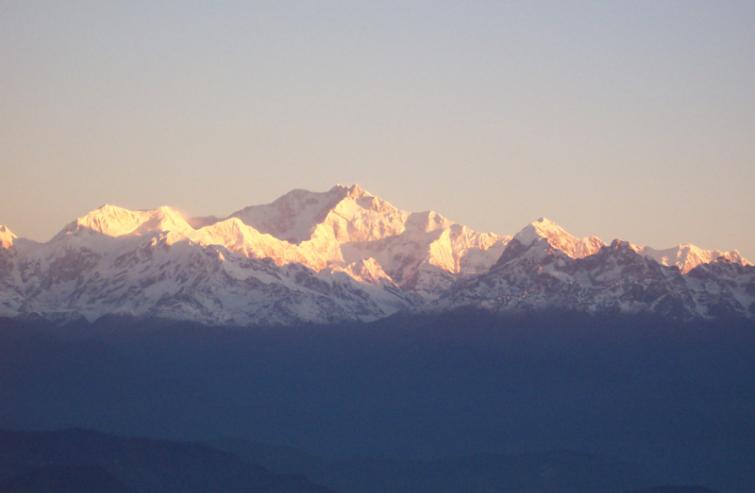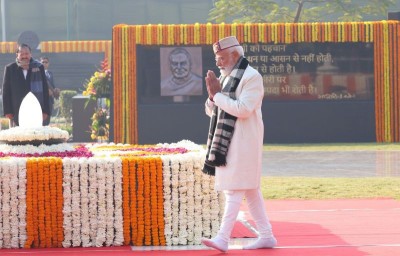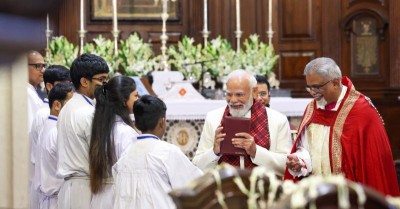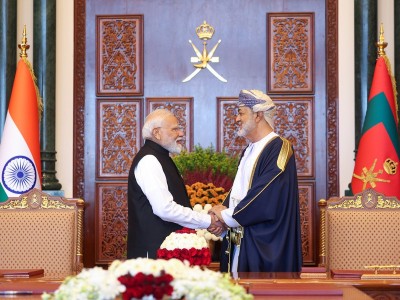 North East India
North East India
Northeast Border Disputes
Decades-old inter-state border disputes, which have the potential to provide new spaces to terrorist formations, threatening the tenuous peace in India’s troubled Northeast, have once again come to the fore.
The Assam-Mizoram border flared up on October 9, 2020, when, according to Mizoram Government, officials of the Karimganj District, Assam’s Forest Department and Assam Police set ablaze a farmhouse owned by John Zolawma of Thinghlun village in Mizoram’s Mamit District, along the Assam-Mizoram border. Many plantations, including over a thousand betelnut plants, were destroyed by the Assam officials. Subsequently, according to reports, clashes erupted between the locals. However, officials on the two sides met and the situation was controlled.
But the ‘peace’ did not last long.
Clashes again erupted in the night of October 17, 2020. There were several versions of this incident. Deputy Inspector General of Police, Southern Assam, Dilip Kumar Dey, explaining the incident claimed that a COVID-19 testing centre had been set up by the Mizoram Government at Lailapur (Cachar District, Assam), 1.5 kilometres into Assamese territory, on October 16, to test samples of Mizoram-bound truckers and other people. "The testing centre was set up unilaterally and under the pressure of Mizoram's NGOs," Dey claimed, despite the Cachar Police’s strong objections to the setting-up of the centre without the permission of the Assam Government. Following this, Day asserted, some youths from Mizoram came to Lailapur on October 17 and attacked truck drivers and villagers, and burnt more than 15 small shops-cum-houses. An unnamed police officer in Cachar claimed that more than 50 people, mostly truck drivers, were injured when assailants from Mizoram threw stones and bricks at them. Villagers of Mizoram’s Mamit District, which is contiguous to Cachar, however, alleged that miscreants from Cachar came to their villages and attacked shops and houses, causing huge damage.
According to a third version, three persons were reportedly injured when several huts made by some people of Lailapur in Cachar District were set ablaze by some people from the Mizoram side who claimed that the huts were made in the ‘disputed border area’ of Assam and Mizoram. Subsequently, the people of Lailapur clashed with residents of neighbouring Vairengte in the Kolasib District of Mizoram, in which seven persons from the Mizoram side were injured.
Meanwhile, both Governments have blamed each other.
The Mizoram State Cabinet on October 18 blamed the Karimganj and Cachar District administrations in Assam for the flare up. In a statement released after a Cabinet meeting, the Mizoram Government said that the Union Ministry of Home Affairs (UMHA) had been informed of the “transgressions committed by the government of Assam”. The statement said that essential supplies had been choked off by a road blockade “organised by Assam” on inter-state highways. It also announced that security would be beefed up in the “affected border areas”. Soon thereafter, the Mizoram Government deployed additional troops along the Border.
On the other hand, on October 18, the Assam Forest and Environment Minister Parimal Suklabaidya blamed the incident on “miscreants from the other side of the border.”
Both sides, however, discussed the issue after the intervention of the Union Government on October 21 and some sort of normalcy was briefly restored.
On October 22, however, bomb blasts took place in a school located in the Khulicherra area in Assam, near the Assam-Mizoram border. Assam's Additional Director General of Police, Law and Order, Gyanendra Pratap Singh stated "The blasts that damaged the property of the government school was possibly triggered by the miscreants to frighten the border residents.”
Tension further escalated on October 30 after two farmers were kidnapped “by the people belonging to Mizoram” while they were working at their paddy field at Tulartal village. An Assam Government release stated that people in Tulartal, Baghewala, Singua and Lailapur areas were “being terrorised by Mizo miscreants and to reassure(d) them that the state government is with them”.
At the time of writing, tension continues to prevail along this border. National Highway 306, Mizoram’s lifeline, remains closed with around 300 goods-laden vehicles stranded on either side of the border. The people sitting on blockade in Assam are reportedly demanding withdrawal of Mizoram’s security personnel from Assam’s territory. On the other hand, Mizoram Home Minister Lalchamliana asserted that his administration would not call off security personnel from the border with Assam till normalcy is restored.
If the blockade prolongs, it will be difficult for Mizoram, which secures all its essentials, food grains, fuel and various other goods and machines through this highway. The people in the region, which like other areas, are already facing economic hardships due to the COVID-19 pandemic, will have to go through face challenges. Both the tensions on the border and the greater strains imposed on the people open up the possibilities of a revival of dormant terrorist groups in the region.
Such groups would also secure some support as a result of claims by locals that current clashes along the border were not an issue between Assam and Mizoram, but the acta of “illegal Bangladeshis” on the Assam side, who they blame for the current flare up. B. Vanlaltana, president of the Mizo Zirlai Pawl, a Mizo student organisation, asserted, “Illegal Bangladeshis are creating all this trouble. They come and destroy our huts, cut our plants and this time pelted stones on our policemen.” Samuela Zoramthanpuia, general secretary, Mizo Zirlai Pawl, adds, “Most of them are illegal immigrants from Bangladesh who claim to be locals. They are not Assamese or Indians.” It is useful to recall that the “foreigners’ issue” led to the emergence and sustenance of several insurgencies and terrorist groups in the region.
Meanwhile, Meghalaya has also demanded the resolution of its border issue with Assam. It may be mentioned that Assam and Meghalaya have at least 12 areas where there are boundary disputes. Both states have adopted a policy where one state cannot carry out developmental activities in these areas without informing the other.
On October 31, 2020, Assam Minister of Finance, Health, Education and PWD, Himanta Biswa Sarma, stated that the border issue would be resolved on priority by UMHA, soon after the upcoming Assam Assembly Elections, as "some ground work has already been done by MHA [UMHA] for a larger solution". Biswa Sarma elaborated,
After the Assam elections, you will see active dialogue between all northeastern states. [Union] Home Minister Amit Shah has asked all states already and he has done his homework on this. Immediately after Assam elections, the Home Ministry's topmost agenda will be resolving the border disputes across the northeast… We don't want to initiate a dialogue process across northeast immediately since the Assam government will be there only about three-four months and so it's better that the dialogue should start with the new government.
Similarly, Union Joint Secretary (Northeast), UMHA, Satyendra Garg, stated, on October 22,
We will be working for a permanent solution. I am hopeful that the border dispute between Mizoram and Assam will be permanently resolved by March or later next year.
It is pertinent to recall here that inter-state border disputes in the region largely pertain to borders between Assam and four other states – Arunachal Pradesh, Meghalaya, Mizoram, and Nagaland – each of which was who carved out of undivided Assam. Manipur and Tripura, which were princely states, were not part of Assam, and do not have any border issues with Assam.
The moot question, however, is, why did the Bhartiya Janata Party (BJP)-led Government not try to resolve these issues earlier, if it is so sure of resolving the issues soon after the elections? The BJP has been in power in Assam since 2016 and at the Centre since 2014. Are the current flareup and the promises of early resolution an election gimmick? The BJP Governments’ tall claims of quick resolution already stand exposed in the Naga talks, which have reached a deadlock.
New Delhi appears to neglect the reality that these issues have the potential to push the region back into turmoil at any stage and should be handled with utmost care. Embroiling the region in divisive electoral politics is fraught with untold risks.
It is to be noted that the inter-state boundary dispute between Assam and Nagaland is the most prominent and has resulted in the most violence, mainly backed-by terrorist groups. Indeed, in August 2014, in a series of violent incitdents 20 persons were killed: 14 Adivasis (tribals from Central India settled in the Northeast region) killed by miscreants from Nagaland; and another six persons killed in a clash with the Police. Several others have been injured in the disputed 'B Sector' of the Assam-Nagaland border in the Golaghat District. Following the incidents, Nagaland and Manipur were cut-off by road after an economic blockade was imposed against Nagaland by various Assam-based organizations.
There are other inter-state border disputes in the region, including those between Mizoram and Tripura, one of which has flared up since August 2020, when both sides reasserted their respective claims over Phuldungsei village in the Jampui Hill Range, falling along the border of the two states. The situation worsened when “Songrongma”, a Tripura based tribal organisation, declared it would construct a Shiv Temple and do community activities in the area on October 19 and 20. Authorities in Mizoram issued prohibitory orders in the area on October 16. The proposed construction had been planned without the permission of the Mizoram Government and was “against the interest of the local community”, and could “harm the peace and tranquillity in the region”, the order said. Earlier, on October 8, Mizoram Home Secretary Lalbiaksangi, had written to his Tripura counterpart Barun Kumar Sahu, asking him to intervene and stop the proposed construction, since any activities on the disputed inter-state border could result in law and order problems.
Though the order was withdrawn, with the Mizoram Government claiming that this was done as the organisation has called off its plans to build the temple, the fact is that Tripura had sent a letter to Mizoram saying that “the prohibitory order issued by the Mamit district magistrate, Mizoram. on 16 October is indicating areas of North Tripura district of Tripura state in his order, which is highly objectionable".
Mizoram has now demanded that Tripura withdraw its Forces deployed in the area during the tensions. Mizoram Home Secretary Lalbiakangi, in a letter dated October 28, to Tripura Home Secretary Barun Kumar Sahu, demanded, “As the area in which the TSR [Tripura States Rifle] is positioned and new constructions being made is inside Mizoram, you may shift the TSR from Thaidawr Tlang [Phuldungsei village is known by this name in Mizoram] to a location inside Tripura and stop and remove all constructions at this location.” Though the Tripura Government has not responded so far, an unnamed Tripura official was quoted as stating, “It doesn’t work this way, that anyone comes one fine morning and claims a part of our state as theirs. Denying the claim is also an acknowledgement of dispute. This is a part of Tripura.”
The relative peace in India’s Northeast remains extremely fragile, and is at continuous risk, particularly as a result of rampant divisive politics, the enduring neglect of a number of simmering disputes, and the protraction of the many agreements arrived at between the Government (both State and Central) and various currently dormant insurgent formations. These various issues demand urgent attention, in good faith, lest the gains of the past decade are compromised.
Support Our Journalism
We cannot do without you.. your contribution supports unbiased journalism
IBNS is not driven by any ism- not wokeism, not racism, not skewed secularism, not hyper right-wing or left liberal ideals, nor by any hardline religious beliefs or hyper nationalism. We want to serve you good old objective news, as they are. We do not judge or preach. We let people decide for themselves. We only try to present factual and well-sourced news.







